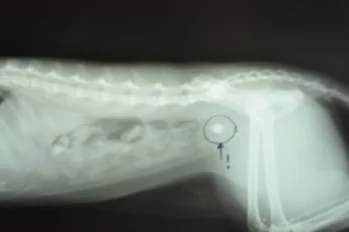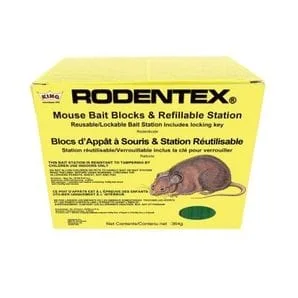On this page you will find different case studies. All of these cases happen at our clinic. We thank our owners and clients for allowing us to present these cases. We hope that you find this page both enlightening and helpful in participating in making informed decisions regarding your pets health!
This months case
Sylvester presented with a history of urinating outside the litterbox, and recently seemed to have a bit of blood in his urine. His owner noted that he seems more vocal than usual, and was going in and out of his litterbox straining.

Sylvester, and many cats like him, are actually presented with a perceived difficulty to defecate, or of constipation as owners have noted him straining. Rather than constipation, he was actually having difficulty urinating. In some cases, as with him, he was unable to urinate, a medical emergency. He is at risk to having his bladder rupture, or the back pressure from the urine being held can damage his kidneys.
Symptoms noted can include:
straining , blood in urine, frequent visits to litterbox, urinating outside the litterbox, vocalization, self grooming, and can progress to not eating, vomiting and lethargy.
Diagnostic Rule outs...what could this be???
difficulty defecating/constipation, urinary tract infection, bladder stones or crystals,
idiopathic cystitis
Diagnostic tools
physical examination: bladder size, presence of stool
urine: assess for evidence of infection, blood or crystals in urine
with bacterial infections the ph is often elevated, some white blood cells+/- red cells are present
urine culture and sensitivity : access presence of bacteria and what antibiotic works against it
blood tests; evaluate electrolytes, kidney function, concurrent illness
with idiopathic cystitis, no bacteria are present and the ph is not elevated, urine often found with some blood present. ANTIBIOTICS ARE NOT INDICATED. BUT PAIN RELIEF IS!!
xrays: evidence of bladder stones/constipation. you will note the circled area in the above xrays. Yes these are bladder stones. ouch!!
Treatment
In the case of Sylvester, unable to urinate, he required a general anesthetic and a catheter placement enabling him to urinate. He was also placed on pain relief, intravenous fluids (increasing his urinating, to clear his bladder of debris) antibiotics and canned food.
Stones: 50% can now be dissolved with a combination of prescription diets, increased water consumption and antibiotics. the other 50% may require surgical removal.
Urinary tract infections ARE ACTUALLY RARE. Increased water intake IS ALWAYS recommended.
IDIOPATHIC CYSTITIS
Most cases of urinary tract disease (90%) in cats have now been grouped under idiopathic cystitis, thought to be caused by a virus, similar to herpes virus in people responsible for the development of "cold sores". In the affected cats, while under stress, this virus can can a painful sterile (no bacteria involved) bladder wall inflammation. It is often a diagnosis made once infections and stones have been ruled out as causes of inappropriate urination.
THE Most important factor in the treatment AND PREVENTION of urinary tract disease is increasing water intake. The volume of urine produced is then increased leading to a more dilute urine. Crystals are less likely to form, and bacteria are not able to climb the urinary tract.
1. Canned food is one simple way of increasing water intake. It is now recommended that all cats be fed a combination of BOTH dry and canned foods. The former aiding in dental care, the latter in the prevention of urinary tract disease. Other recommendations include water fountains, or flavoured water.
2.As anxiety plays a role in this disease, please refer to the Ohio State University website: indoor cat initiative. Mentioned are the importance of routine and play /hunting behaviour. A feliway DIFFUSER PLUGS INTO THE WALL. IT is a "happy cat" phermone that can be utilized as a drug free anti-anxiety for your cat.
3. note prescription diets, containing anti stress ingredients can aid in reduction of recurrence by as much as 90%!!!
other notes: litter box preferences. Sometimes cats are not using the litterbox for other reasons. Some rules of thumb...
each cat in household should have one litterbox, plus one more in the house
no deoderizers or detergents utilized within the litter, or while cleaning the box
location is in a quiet, low traffic area
"bully cat" preventing other cat in house from reaching the litterbox
Before you pet is labelled as a " behavioural problem", ensure that they are promptly examined and rule out potential health problems.
and yes Sylvester is doing great!!
How do we get urine samples from a cat!!
1. cystocentesis; a needle in inserted into the abdomen withdrawing urine from the bladder. This allows for a sterile sample collection. The pets tolerate this better than passing a urinary catheter, which appears uncomfortable.
2.Using a non absorbable material in the cleaned out litterbox. We have either nosorb (small rubber pellets ) or kity kat litter (similar to clumping litter, but does not absorb).
tricky part...we need the urine sample brought to us immediately. Over time, the ph of the urine and crystals within it may dissolve or form making it impossible to interpret.
Harley:

History; Harley is a 3 year old, male neutered boxer.
Harley was presented to us after ingesting Rodentex, a rodent poison. Rodentex works by decreasing the production of clotting factors by interfering with the body’s reserves of Vitamin K. Your pet can also inadvertently become poisoned by ingesting a rodent whom has already consumed the bait.
Pre-existing conditions; none.
Diagnostics; None yet, blood work to be done 48 hours after Vitamin K supplementation is done.
Treatments; We induced vomiting by giving Harley a medication to purge the toxin. This should be done as soon as possible after ingestion. He was then given activated charcoal to bind to the toxin and prevent absorption. Harley is now receiving Vitamin K supplementation every 12 hours for the next 4 weeks. This is because certain clotting factors depend on vitamin K to be effective.
Note; this case was caught early. Sadly sometimes these cases can get complicated, needing long term treatments and even multiple blood transfusions. Unfortunately these situations lead to a guarded or poor prognosis.
the update, doing well!!


